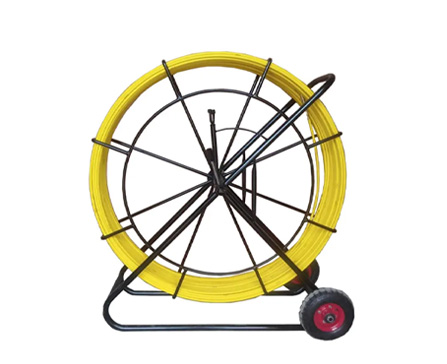
-
 Afrikaans
Afrikaans -
 Albanian
Albanian -
 Amharic
Amharic -
 Arabic
Arabic -
 Armenian
Armenian -
 Azerbaijani
Azerbaijani -
 Basque
Basque -
 Belarusian
Belarusian -
 Bengali
Bengali -
 Bosnian
Bosnian -
 Bulgarian
Bulgarian -
 Catalan
Catalan -
 Cebuano
Cebuano -
 Corsican
Corsican -
 Croatian
Croatian -
 Czech
Czech -
 Danish
Danish -
 Dutch
Dutch -
 English
English -
 Esperanto
Esperanto -
 Estonian
Estonian -
 Finnish
Finnish -
 French
French -
 Frisian
Frisian -
 Galician
Galician -
 Georgian
Georgian -
 German
German -
 Greek
Greek -
 Gujarati
Gujarati -
 Haitian Creole
Haitian Creole -
 hausa
hausa -
 hawaiian
hawaiian -
 Hebrew
Hebrew -
 Hindi
Hindi -
 Miao
Miao -
 Hungarian
Hungarian -
 Icelandic
Icelandic -
 igbo
igbo -
 Indonesian
Indonesian -
 irish
irish -
 Italian
Italian -
 Japanese
Japanese -
 Javanese
Javanese -
 Kannada
Kannada -
 kazakh
kazakh -
 Khmer
Khmer -
 Rwandese
Rwandese -
 Korean
Korean -
 Kurdish
Kurdish -
 Kyrgyz
Kyrgyz -
 Lao
Lao -
 Latin
Latin -
 Latvian
Latvian -
 Lithuanian
Lithuanian -
 Luxembourgish
Luxembourgish -
 Macedonian
Macedonian -
 Malgashi
Malgashi -
 Malay
Malay -
 Malayalam
Malayalam -
 Maltese
Maltese -
 Maori
Maori -
 Marathi
Marathi -
 Mongolian
Mongolian -
 Myanmar
Myanmar -
 Nepali
Nepali -
 Norwegian
Norwegian -
 Norwegian
Norwegian -
 Occitan
Occitan -
 Pashto
Pashto -
 Persian
Persian -
 Polish
Polish -
 Portuguese
Portuguese -
 Punjabi
Punjabi -
 Romanian
Romanian -
 Russian
Russian -
 Samoan
Samoan -
 Scottish Gaelic
Scottish Gaelic -
 Serbian
Serbian -
 Sesotho
Sesotho -
 Shona
Shona -
 Sindhi
Sindhi -
 Sinhala
Sinhala -
 Slovak
Slovak -
 Slovenian
Slovenian -
 Somali
Somali -
 Spanish
Spanish -
 Sundanese
Sundanese -
 Swahili
Swahili -
 Swedish
Swedish -
 Tagalog
Tagalog -
 Tajik
Tajik -
 Tamil
Tamil -
 Tatar
Tatar -
 Telugu
Telugu -
 Thai
Thai -
 Turkish
Turkish -
 Turkmen
Turkmen -
 Ukrainian
Ukrainian -
 Urdu
Urdu -
 Uighur
Uighur -
 Uzbek
Uzbek -
 Vietnamese
Vietnamese -
 Welsh
Welsh -
 Bantu
Bantu -
 Yiddish
Yiddish -
 Yoruba
Yoruba -
 Zulu
Zulu


Aug . 12, 2024 03:30 Back to list
Exploring the Benefits and Applications of Rotating Power Connectors in Modern Technology Solutions
The Importance of Rotating Power Connectors in Modern Engineering
In the rapidly advancing world of engineering and technology, the need for efficient and reliable power connections has never been more critical. Among the various types of connectors used in industrial applications, rotating power connectors have emerged as essential components that facilitate power transmission in dynamic environments. Their unique design and functionality make them particularly valuable in sectors such as mobile machinery, robotics, and aerospace.
What are Rotating Power Connectors?
Rotating power connectors are specialized devices that allow for the transmission of power and signals while enabling rotational movement between components. This is particularly beneficial in applications where conventional connectors may become entangled or damaged due to the constant motion of equipment. These connectors are engineered to maintain a stable electrical connection during rotational motion, thus enhancing the performance and durability of the systems they support.
Key Features and Benefits
One of the primary advantages of rotating power connectors is their ability to handle high levels of torque and rotation. This characteristic makes them ideal for use in applications like wind turbines, cranes, and robotic arms, where continuous rotation is a fundamental operational aspect. Additionally, these connectors are designed to withstand harsh environmental conditions, such as extreme temperatures, moisture, and dust, ensuring reliable performance even in challenging settings.
Another significant benefit of rotating power connectors is their compact design. In many industrial applications, space is at a premium. The streamlined construction of these connectors allows for efficient space management without sacrificing functionality. Moreover, many rotating connectors are designed with easy installation and maintenance in mind, which can reduce downtime and operational costs for businesses.
rotating power connector

Applications in Various Industries
Rotating power connectors are versatile and find applications across a range of industries. In the field of robotics, for instance, they enable smooth operation of robotic arms and other moving parts, allowing for greater flexibility and precision in automated tasks. In the energy sector, rotating connectors play a crucial role in wind turbines, where they facilitate the connection between the rotating blades and the electrical power systems.
Aerospace is another industry where rotating power connectors are invaluable. They are used in aircraft systems that require both power and data transmission while the components are in motion. This ensures that critical systems can operate smoothly without the risk of disconnection or failure due to the constant movement of aircraft components.
Future Trends
As technology continues to evolve, the demand for more sophisticated rotating power connectors is expected to grow. Innovations in materials science may lead to even lighter and more durable connectors that can handle higher currents and improve overall efficiency. Furthermore, the integration of smart technology into connectors could enable real-time monitoring of power transmission, which would provide valuable data for maintenance and operational analysis.
Conclusion
Rotating power connectors are indispensable tools in modern engineering, providing solutions that enhance the functionality and reliability of various applications. Their ability to maintain a stable connection during motion makes them essential for industries that rely on continuous operation and precision. As technology progresses, these connectors will likely evolve, leading to even greater improvements in efficiency and effectiveness. For engineers and manufacturers, investing in high-quality rotating power connectors is crucial for staying competitive in an ever-evolving landscape.
Latest news
What Are Construction Tools and How Are They Used?
NewsJul.11,2025
Professional-Grade Duct Rodding Tools for Superior Cable Installation
NewsJul.11,2025
Enhancing Safety and Efficiency with Modern Hot Stick Solutions
NewsJul.11,2025
Empowering Cable Installation with Advanced Rodder Solutions
NewsJul.11,2025
Elevate Your Cable Installation Projects with Cable Pulling Tools
NewsJul.11,2025
Efficient Cable Handling Solutions: Cable Rollers for Sale
NewsJul.11,2025











